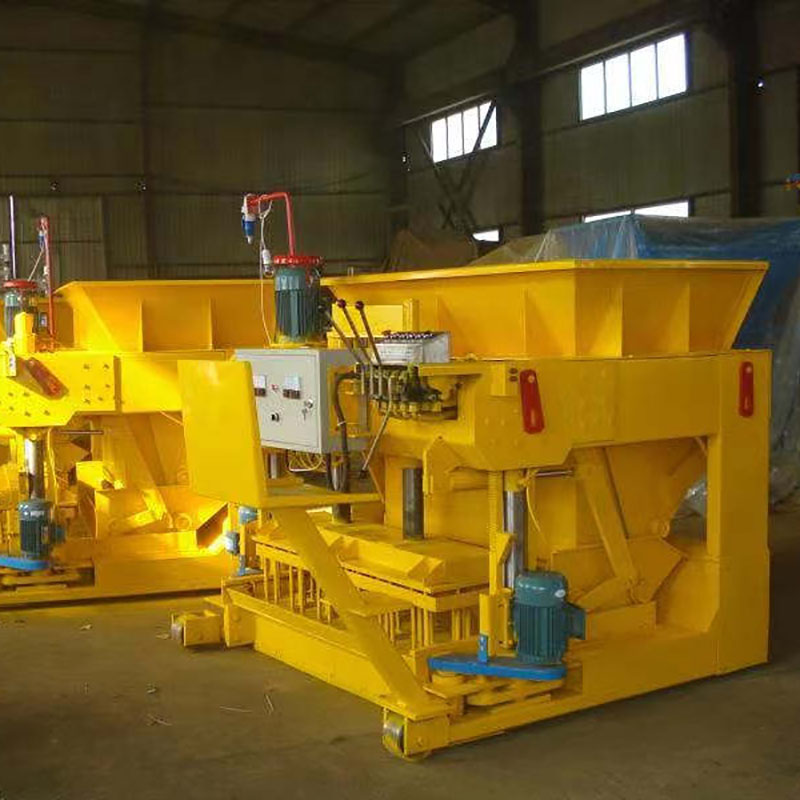
Image source:Aiwei block machine
Introduction
Affordable housing is a global challenge that affects millions of people across the world. Providing adequate and affordable shelter to low and middle-income families is a pressing issue, particularly in urban areas where population growth is rapid. Hollow block machines play a crucial role in addressing this challenge by enabling cost-effective construction of quality housing. In this article, we will explore the significance of hollow block machines in affordable housing and examine various initiatives and technologies that are making a difference.
The Affordable Housing Crisis
Affordable housing refers to housing units that are accessible to households with incomes below the median of a specific area. However, in many regions, the cost of housing has surged, making it unaffordable for a significant portion of the population. This crisis has led to overcrowding, inadequate living conditions, and homelessness. To address this issue, governments, organizations, and innovators are turning to hollow block machines as part of the solution.
Hollow Block Machines: The Building Blocks of Affordable Housing
Hollow block machines, also known as concrete block machines or cinder block machines, are used to produce hollow concrete blocks. These blocks are widely used in construction due to their strength, durability, and insulating properties. Hollow blocks are ideal for affordable housing for several reasons:
- Cost-Efficiency: Hollow block machines are capable of producing a large number of blocks in a relatively short time. This mass production reduces labor costs and material wastage, making housing more affordable.
- Speed of Construction: Hollow blocks are larger than traditional bricks, which means fewer blocks are required to cover a given area. This results in faster construction, reducing labor costs and allowing families to move into their new homes sooner.
- Thermal Insulation: Hollow blocks provide natural thermal insulation, helping to maintain comfortable indoor temperatures. This reduces the need for heating or cooling, further lowering utility costs for residents.
- Structural Strength: Hollow blocks are known for their structural integrity. They provide stable and long-lasting construction, ensuring the safety of residents.
Initiatives Driving Affordable Housing with Hollow Block Machines
Several initiatives and approaches are using hollow block machines to address the affordable housing crisis:
- Government Subsidies and Incentives: Many governments provide subsidies or incentives to encourage the use of hollow blocks in affordable housing projects. These measures can significantly reduce construction costs for developers and homebuyers.
- Non-Governmental Organizations (NGOs): NGOs are actively involved in affordable housing initiatives. They often partner with local communities to build homes using hollow blocks and sustainable construction practices.
- Microfinance and Housing Loans: Financial institutions are offering microfinance and housing loan products tailored to low-income families. These financial tools enable individuals to build or purchase homes made with hollow blocks.
- Community-Based Construction: In some regions, communities are directly involved in the construction of their homes. They receive training in block-making and construction techniques, reducing labor costs and fostering a sense of ownership.
Innovations in Hollow Block Technology
Recent advancements in hollow block technology are further driving affordability and sustainability in housing:
- Alternative Materials: Researchers are exploring alternative materials for producing hollow blocks. This includes the use of recycled materials, such as plastic waste or industrial byproducts, to create eco-friendly and cost-effective blocks.
- Interlocking Blocks: Interlocking hollow blocks are designed to fit together like puzzle pieces, eliminating the need for mortar during construction. This innovation reduces construction time and costs.
- Improved Block Designs: Engineers are continuously working on optimizing the design of hollow blocks. These designs enhance structural strength, insulation properties, and durability while using fewer materials.
Case Studies: Successful Affordable Housing Projects
- Mexico’s Social Housing Program: Mexico has implemented a successful social housing program that leverages hollow block technology. By providing subsidies and partnering with local builders, the program has delivered affordable homes to thousands of families.
- India’s Pradhan Mantri Awas Yojana (PMAY): PMAY is a government initiative in India that aims to provide affordable housing for all. Hollow block technology is a key component of this program, enabling the construction of cost-effective and environmentally friendly homes.
- Kenya’s Mjengo Bora Program: In Kenya, the Mjengo Bora Program promotes the use of interlocking hollow blocks for affordable housing. This approach has empowered communities to build their homes while reducing construction costs.
Challenges and Future Outlook
While hollow block machines hold great promise for affordable housing, there are challenges to overcome. These challenges include the need for improved infrastructure, access to financing, and awareness of sustainable construction practices.
Looking ahead, the integration of technology, such as 3D printing and automation, into hollow block production could further enhance affordability and efficiency. Additionally, continued research into sustainable materials and building techniques will contribute to eco-friendly housing solutions.
In conclusion, hollow block machines have emerged as a powerful tool in addressing the global affordable housing crisis. Their ability to produce cost-effective, high-quality building blocks quickly has revolutionized construction practices. While challenges exist, these machines have already made a significant impact on housing projects in various parts of the world. As technology continues to advance and collaboration between stakeholders strengthens, hollow block machines will play an increasingly vital role in providing safe, affordable, and sustainable housing for millions of people globally, contributing to a brighter future for communities in need.
